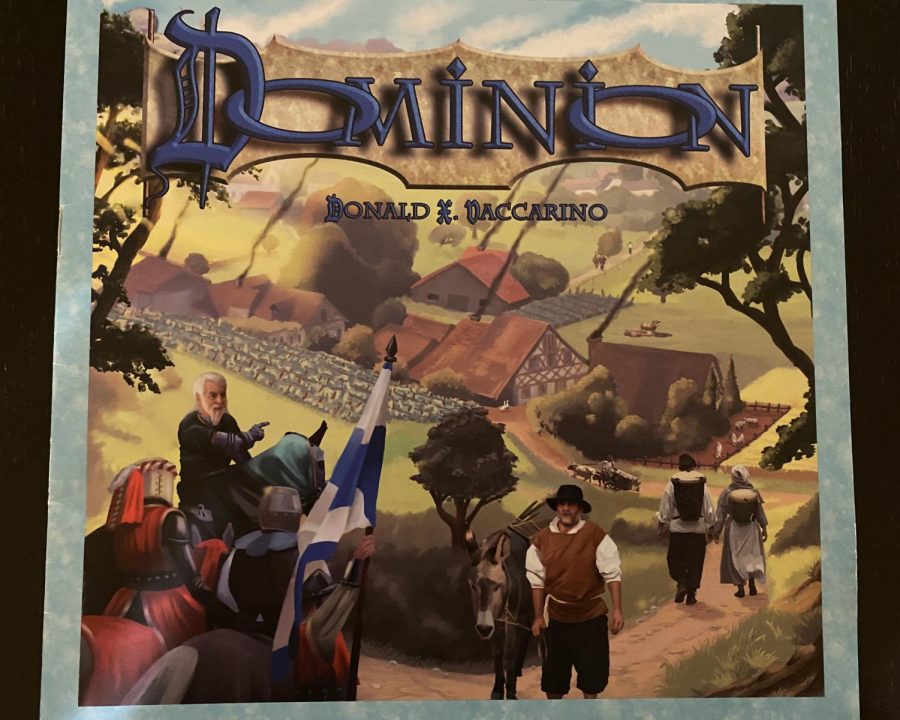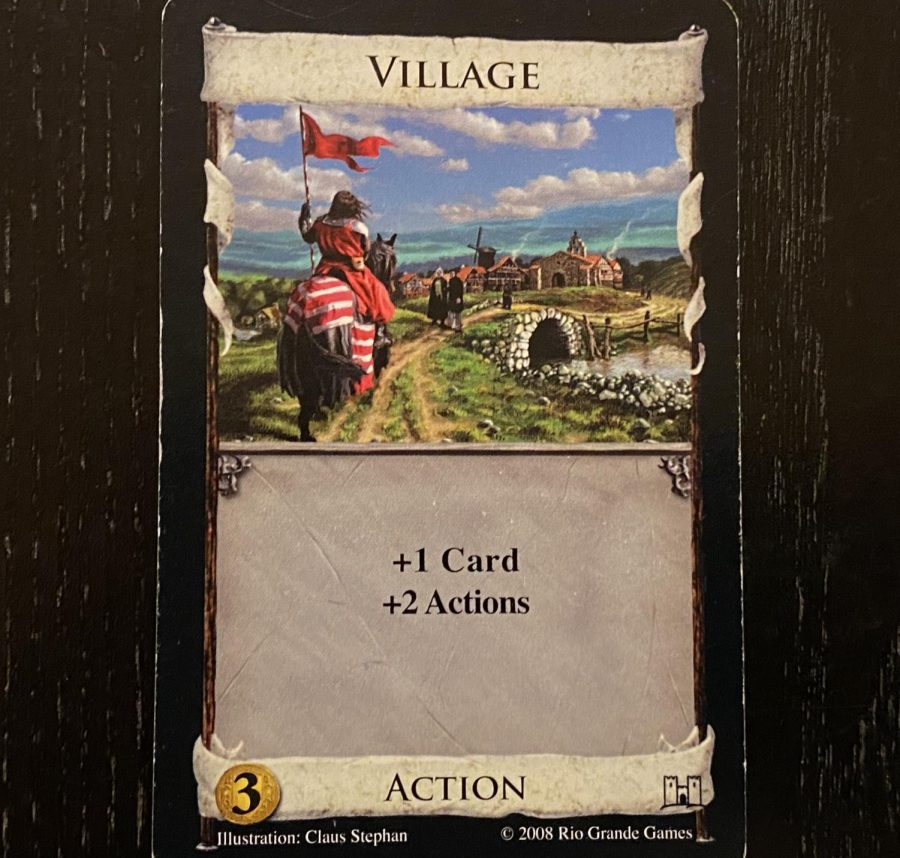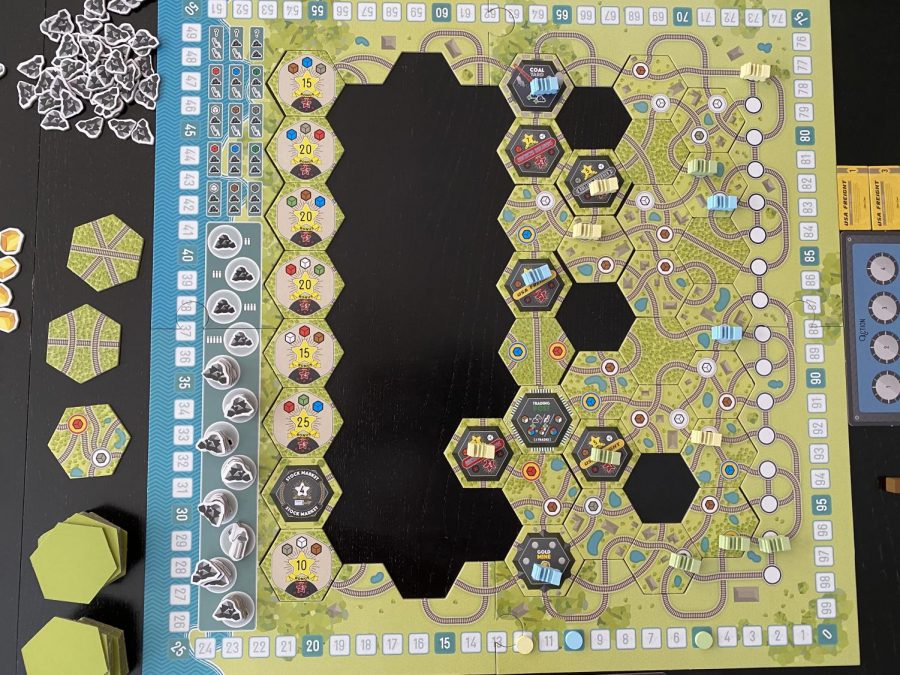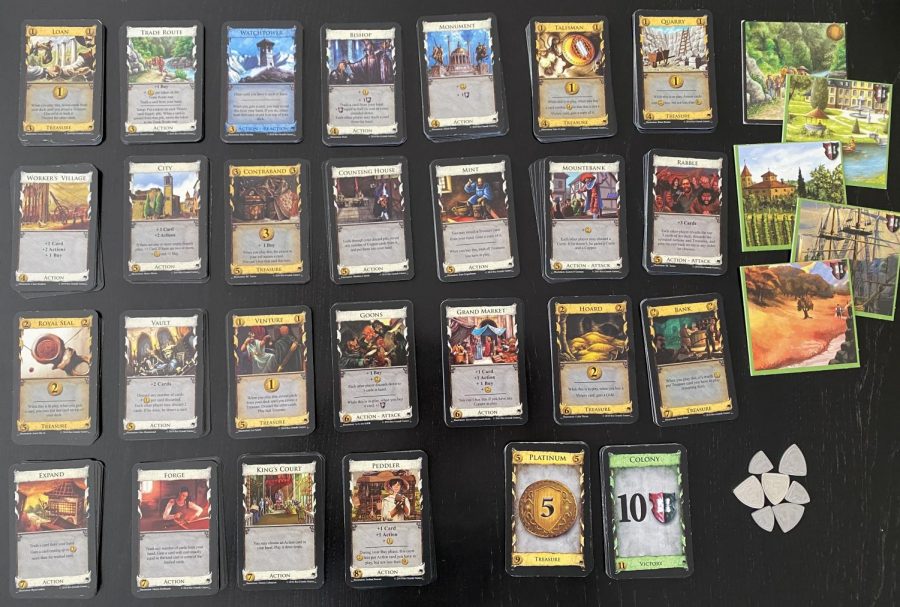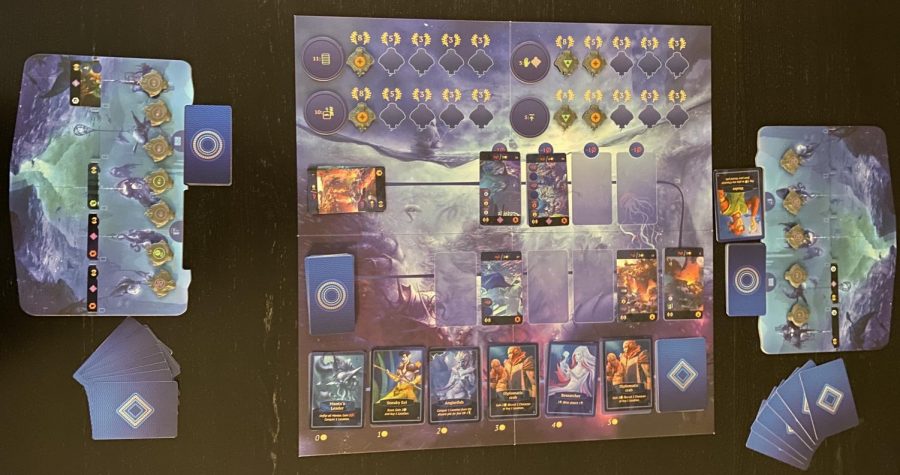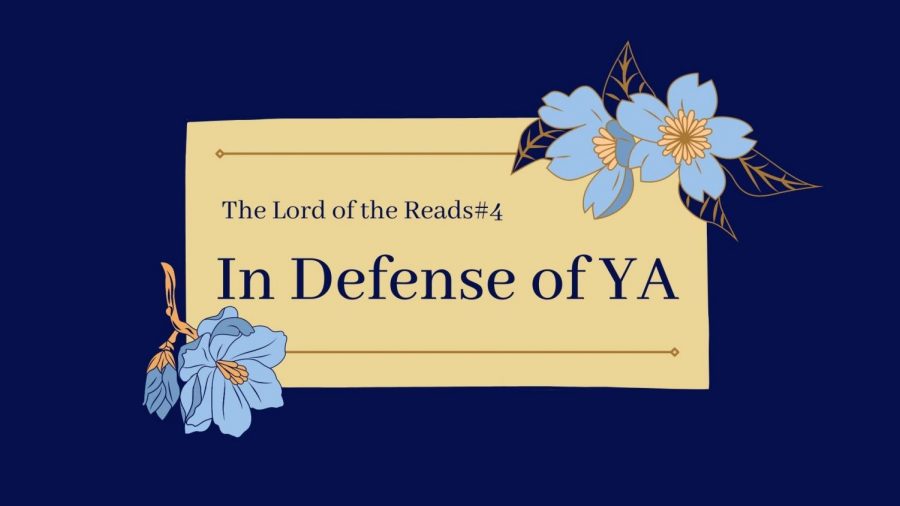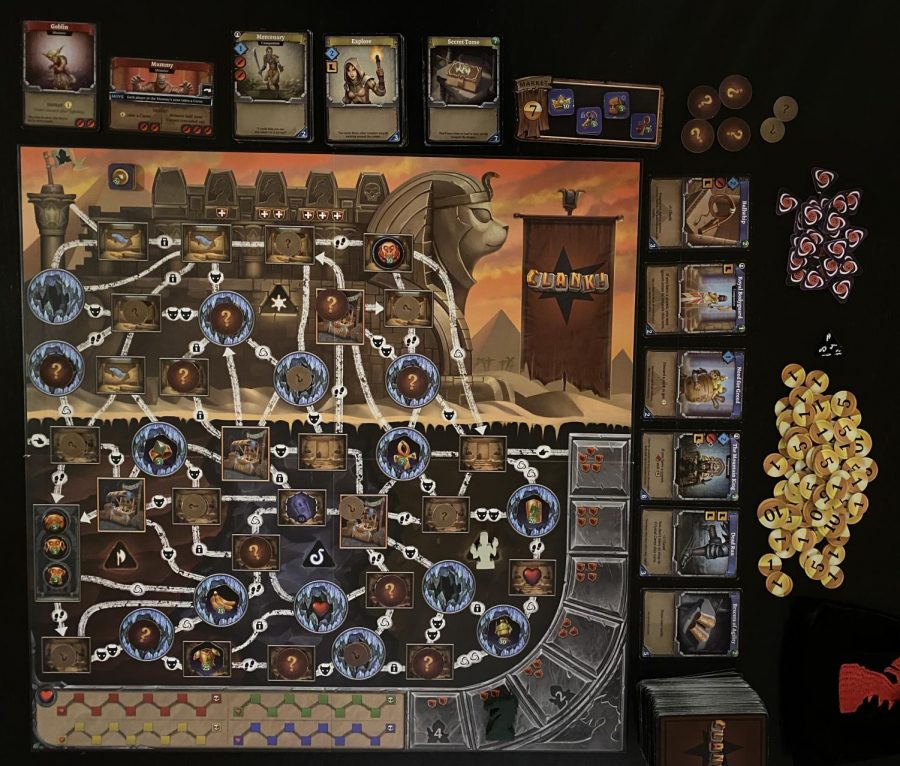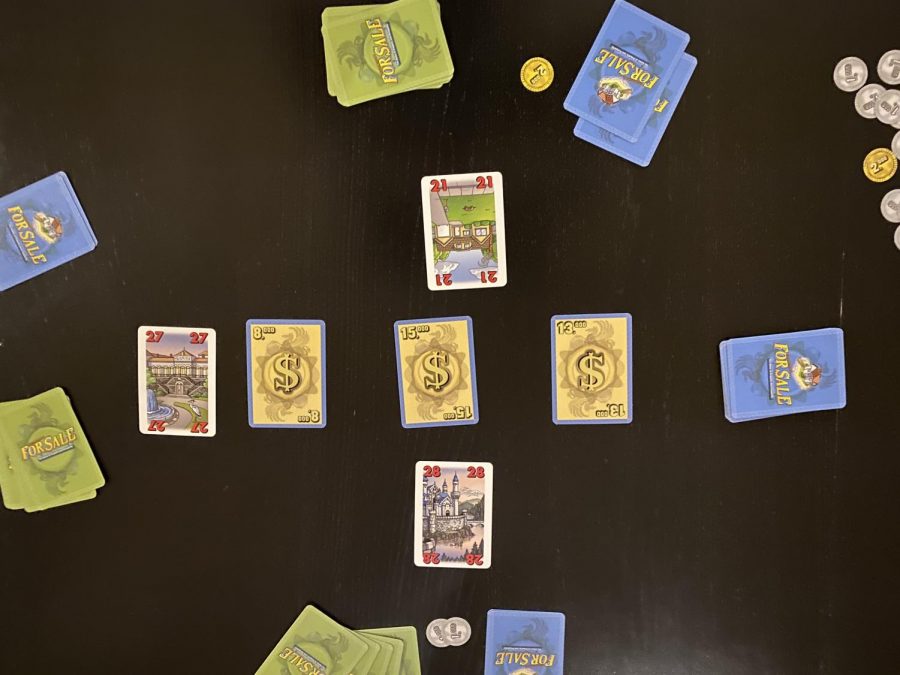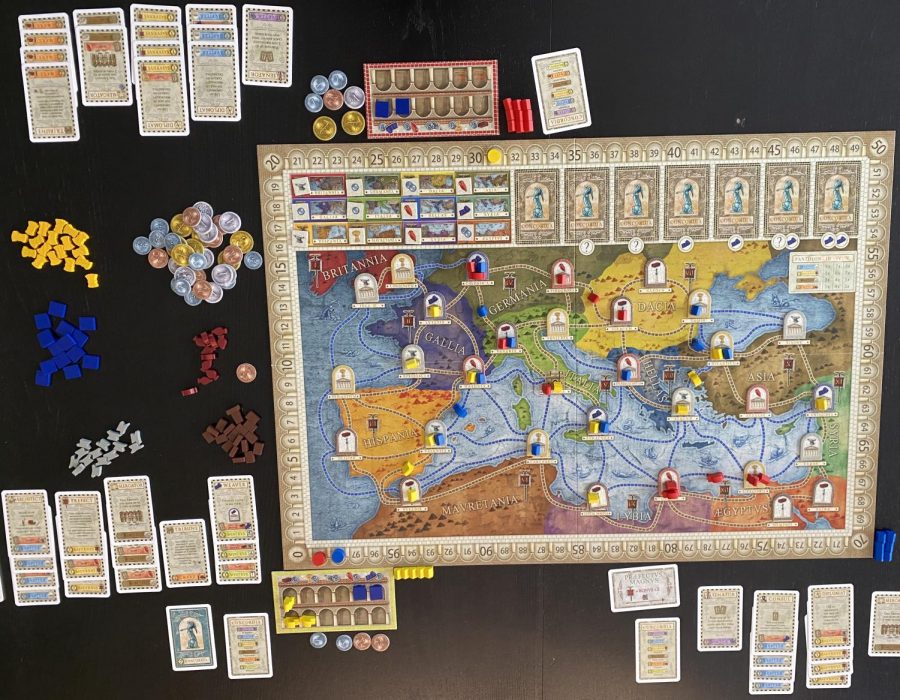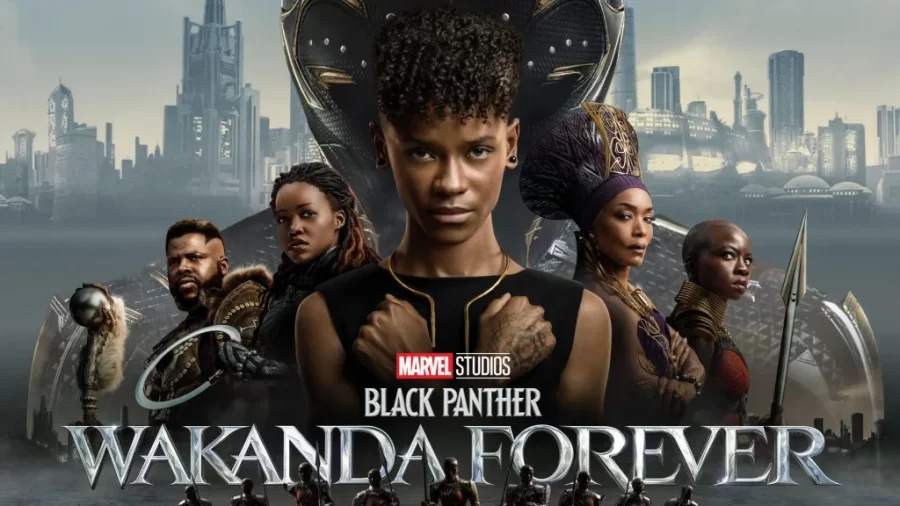This week, I’m going to cut the suspense and start with my opinion of the game before going into more detail.
Dominion is one of the best games of all time. It gets an easy 10 out of 10 for its infinite replayability and simple deck-building mechanism. Now you can buy yourself a copy of Dominion and stop reading. But if you aren’t convinced with that and want to know more, let’s take a look at how to play.
How to Play
The goal of Dominion is to score the most points at the end of the game. To accomplish this goal, you’ll have to create the best deck by buying cards for it each turn. Here’s the twist. Cards that are worth victory points do nothing else, so getting too many of those slows down your efficiency.
The game’s primary mechanism is deck building, which means that you start with a few cards and have to buy more cards to make a better deck. The way deck building in this game works is that you have five cards each turn. Throughout your turn, you’ll play some cards, buy a card or two, and then discard every card you played, bought, or is still in your hand. Then you’ll draw five new cards for your next hand. Whenever you need to do something with more cards than you have in your deck, you’ll shuffle your discard pile to form a new deck. For example, if you have to draw five cards for your next hand, but your deck only has two left, you’ll draw those two and then shuffle your discard pile to draw three more.
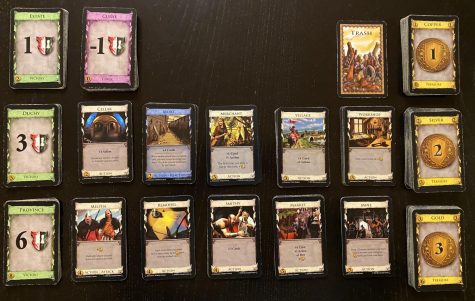
The Dominion game shown here is set up for the introductory game.
More specifically, the cards that everyone starts with are seven coppers and three estates. The picture to the left shows the supply piles that make up the game. The treasures cards on the right, copper, silver, and gold, are part of every game. They provide the player with money to buy cards each turn they are in your hand. Estates, duchies, provinces, and curse cards on the left are the other cards used in all games. They provide the player with victory points.
The other 10 stacks of kingdom cards in the middle are randomly selected. The base game comes with 26 different sets of kingdom cards to choose from. Most of these cards are actions, which means that they give you special abilities and effects when you play them.
Once you read through the cards and know what they do, you are ready to begin. Draw the top five cards of your deck for your first turn. Starting with the first player, players take turns going through steps A, B, C, and D of their turn.
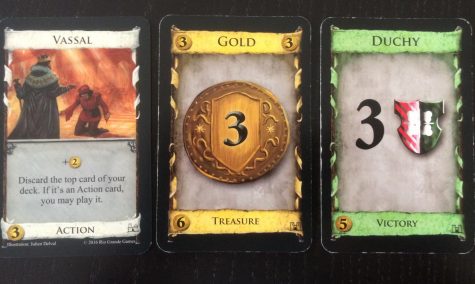
The cost of each card is shown in the bottom left corner. The card types are labeled on the bottom of each card. Action and treasure tell you which phase you can play the card. Victory means it is worth points at the end of the game. Some cards, like vassal seen on the left, interact with certain card types.
A stands for action. Each player gets one free action each turn. Actions allow the player to play an action card from their hand. They follow the instructions on the card, which include a large variety of effects such as drawing cards or getting money to spend this turn. Some action cards give a player more actions, which allows the player to play more action cards from their hand. Your starting deck doesn’t have any action cards in it, but you can get some during the next part of your turn.
B stands for buy. Each player can usually buy one card during this phase, although some action cards will allow the player to buy more cards. Before purchasing a card, the player can play any number of treasure cards from their hand. They count up the money from their treasures and any actions played this turn that provide money. Next, they choose what to buy. Cards they buy go into their discard pile. After the player uses all their buys or decides not to buy any more cards, they finish their turn with steps C and D.
C stands for cleanup. During cleanup, the player places all cards from their hand and play area into their discard pile.
D stands for draw. The last thing the player does is draw five cards for their next turn. If a player needs to draw more cards than they have in their deck, they draw what they can and then shuffle their discard pile to form a new deck.
Then the next player takes their turn. As players buy more cards, they start to get an engine going and can accumulate more money each turn. As a result, they will be able to get better cards, including provinces, the highest value victory card. As supply piles get close to emptying, players will try to buy as many victory cards as they can, sensing that the game will end soon. The game ends when either the province pile runs out or any three stacks of cards run out. At that point, the game ends immediately, and all players count their scores. The player with the most points wins with ties going to the tied player with the fewest turns.
Final Thoughts
You already know I love this game. The main reason why I do is the endless variety. The base game offers 26 different sets of cards, but you only use 10 each game. That means there are so many card combinations that exist, and the strategies change each game. When you lay out the cards on the table, you then have to take a look at them all to determine what your plan is to make the most effective deck.
You may think that everyone would always see the optimal strategy, therefore, making the game luck of who gets the best shuffle. However, two things debunk that theory. First of all, if players do see the same strategy, they still will get different amounts of money to spend on their first 3-4 turns. As a result, they will buy different cards and have variations of that strategy. Second of all, there are 10 kingdom cards out each game, which means there are almost always at least two optimal strategies to win the game. Some of those strategies will be riskier than others, but it is up to each player to determine what is most worthwhile.
10 cards that change every game is intimidating. Fortunately, the rules come with a suggested set of 10 cards for your first game and four other sets of 10 to highlight different strategies. Once you feel ready to randomize your kingdom cards, there are yet more strategies to discover. I won’t comment on any of the strategies now because it is fun to find out what works and doesn’t work on your own.
The other thing the rules include is how all the cards work. Whenever I had a question about how two cards worked together, I was able to answer it by reading about those cards in the rulebook. The base game cards are relatively simple, so confusion doesn’t happen often.
I’ve talked about the game in theory, but not about the experience in playing it. The game experience is delightful. It scales well for two to four players. With two players there are fewer victory cards in each pile. With more players, the rush for victory points happens sooner, which is exciting since your deck may not be at its peak yet. However, it’s also fascinating how someone who is playing so well early on can fall behind because the victory cards they got are now slowing them down.
The cards are mostly balanced. They made a second edition of the game a few years ago and replaced the most unbalanced cards with more fair ones. The slideshow of cards below goes through six of the cards that come in the base game.
Anyone can play a game of Dominion. I found it very easy to teach other people because it only involves the deck building mechanism. Many people I showed the game to enjoyed the game enough to own a copy of it. Some people disliked the game because they thought there were too many cards to figure them all out. Clearly, that’s not an issue because the game has 13 expansions, with the most recent one released in early 2020.
I don’t want to talk too much about the expansions, but I’ll say that they add more variety to the game. I recommend you get an expansion when you have the feeling of wanting some new cards or that you have outgrown the base game. Some of the expansions, especially the later ones, introduce new minor mechanisms that drive the set. Each expansion has it’s own themes for the cards too, but there is still the right mix of different kinds of cards.
The price for the base game and expansions range from $30 to $45. If you don’t feel like investing in a copy of the game, you can also play Dominion Online. Playing the base game is free, and you can buy expansions using a subscription model. Dominion Online is an excellent way to play with friends and family that are away from home and a way to learn the game.
The only minor thing that Dominion lacks is consistent artwork. The artwork is not bad. Some of the cards have great artwork, but other cards don’t. It doesn’t change my opinion of the game, but it is a little weird to draw your hand and have some great looking cards and others that aren’t as pretty.
Ultimately, Dominion is a fantastic game that should belong in anyone’s collection. Dominion is essential for serious and casual gamers but is also for people who want a fun, easy game to pull out every once in a while with some family or friends. I’ll say it again that Dominion gets a 10 out of 10 because it is excellent. It has more replayability than any other game I’ve seen while also being straightforward enough the play with any group of people.

